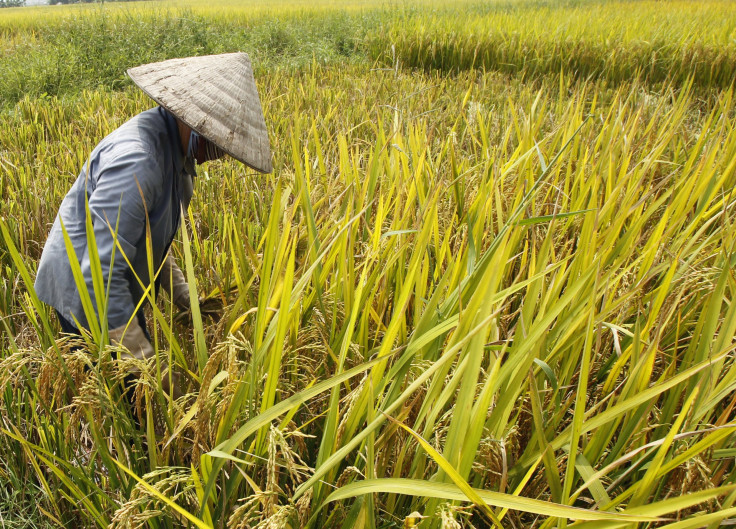Myanmar Benefits From Thai Rice Subsidy As Thai Traders Increase Rice Trade

The Thai government has embarked on a disastrous and costly rice subsidy program to benefit its rice farmers – the program cost the government $4.4 billion last year – but an unexpected beneficiary turned out to be Myanmar, as Thai traders flock to the neighboring country to buy rice that will then be sold to the Thai government at a hiked price.
"For a long time, Thailand did not buy any rice from Myanmar… But at the beginning of this year, Thai traders started to buy normal rice and broken rice [grains] from Myanmar and transport it across the border," said Ye Min Aung, the secretary of the Myanmar Rice Merchants Federation (MRMF), according to the Irrawaddy, a Thailand-based Myanmar newspaper.
Thailand’s scheme had been simple, according to Time magazine. The government would buy rice from local farmers at a generous price, as high as 50 percent above market rates at times, and it would cut off exports to the rest of the world. Being the largest rice exporter, Thailand expected global prices would spike from the resulting shortage, allowing the government to recuperate its cost by selling to the world at a premium.
Unfortunately, for Prime Minister Yingluck Shinawatra’s administration, it underestimated the power of the global market. Traders began to switch their purchases from Thailand to suppliers in India, Pakistan, Vietnam, and in some cases Myanmar.
Countries such as India and Vietnam, noting the opportunity to gain ground, rushed to fill the shortfall. Instead of the price hike they had hoped for, the Thai government watched as global prices sank. The 17 million tons of rice it has amassed will be hard to sell at any kind of price that allows the government to recoup its cost.
Unlike trade with Vietnam and India, Thai traders’ purchases of rice from Myanmar are largely unregulated.
In early July, Thai officials at the Myawaddy-Mae Sot border crossing between Myanmar and Thailand discovered 25 tons of rice hidden in a cargo truck, according to the Bangkok Post. The paper also reported that the rice was destined to be sold under the Thai government’s rice scheme.
The MRMF is launching an investigation into the cross border rice trade to Thailand, and has said that the trade should be regulated, and involve Myanmar rice traders.
“We need to find out whether a lot of rice is exported across the border to Thailand, officially or unofficially,” said Aung.
One-quarter of Myanmar’s $45.4 billion GDP comes from the farming sector, according to data from the Ministry of Agriculture and Irrigation in 2011, the most recent available figures.
Two years ago, rice exports from Myanmar were just 537,000 tons. Since then, that number has tripled, and is poised to reach 1.4 million tons in the current fiscal year.
Myanmar rice is also flowing to China unregulated. The massive, unofficial rice trade on the Myanmar-China border is estimated to be around 800,000 tons, according to Aung.
"Burma and China don't have bilateral trade agreement yet [for rice], even though the Burmese government asks for it every time they meet with China," Aung said, according to the Irrawaddy. "So rice from Burma simply flows [unregulated] across the borders. The Chinese authorities could take action against the traders, but they don't do it because their people demand this rice."
© Copyright IBTimes 2024. All rights reserved.





















